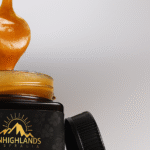Fish and chips are not just a popular fast-food dish: It is a cultural badge in several nations. One will not feel that he/she has tried this dish without the wrapping paper that accompanies it. Other than mere packaging, the fish and chips paper is very crucial in branding, grease management, and food safety. The realization of the process of manufacturing this specialty paper can give information about quality and presentation. Each process enhances the product and makes the product unique. Here in the blog, we are going to look in detail at the creation of custom paper for fish and chips.
Market Needs and Signature Idea
On the way towards production, identification of the market requirements and the business is what comes first. In Custom fish and chip paper shops, the paper that is there should keep the product warm and grease-free, as well as portray the image of the brand. The market research identifies the customers’ preferences for design, thickness, and functionality. To conform to current eco-friendly notions, brands tend to find paper that is food-safe and can be biodegraded. At this point, the manufacturing companies of packaging are consulted to calculate the potential and personalize the look and features of the paper.
Choosing the Correct Base Material
The performance of custom fish and chips paper depends much on the selection of base material. White or brown kraft paper, sheets covered in wax, or even biodegradable material are the most frequently used ones. They should be grease resistant, breathable, and sturdy enough to carry any hot food and not tear or leaking. This is a direct step towards the long life and performance of the packaging. Depending on the durability that a business prefers or acts economically, some prefer to use thicker materials, and others prefer thinner sheets. This choice of the chip paper becomes the basis of all the rest.
The Paper Artwork Design
When the material that has to be used is selected, the designers start working on the appearance of the paper. It can be logos, taglines, classical or modern pattern, ns, or even illustrations in general, based on the theme of the brand. H, creativity will be significant in making the package look unique. A good design will not just make the product more appealing, but it will also assist in strengthening brand awareness. All colors and components have to be in line with the food quality ink compliance requirements. Even a traditional design may acquire a modern stroke to become appealing and interesting. The fish paper design should be practical and attractive-looking.
Techniques Of Printing And Customization.
Once the artwork is complete then the paper proceeds with printing. Flexographic printing is the most efficient method of wrapping food because it is also compatible with food-friendly ink. Single color or multi-color printing can be carried out depending on the complexity of the design. Metallic and spot color options may be used in instances when brands wish to look exquisite. Customization might also be done by cutting the paper to certain sizes or folds so that it can be easily used. After printing, the sheets are checked for the suitability of color and alignment. The outcome is the print of fish and chip paper that comes out in harmony with the brand identity.
The use of Food-Safe Coatings
In the second step, the paper is painted with coatings that assist the paper to be grease and water resistant. They are also necessary to make foods fresh and free of oil stains. It could either be wax, polyethylene, or biodegradable coatings, depending on the choice of the restaurant. The painting should be smoothly done such that there are no weak areas in which grease can leak. An improperly coated paper would ruin the experience of the customer and the brand’s image. It is taken care of that the coating does not influence the print and texture of the papers. This is also the place where the paper can take the effective role of a fish and chip liner to take away baskets or boxes.
Cutting and Finishing
These coated and printed sheets are finally chopped into the desired sizes. Generic needs are better served with standard cuts, and depending on the kind of wrap businesses require, they can make custom dimension requests. Final processing could include punching, folding, or bunching the pages into convenient stacks that are readily scattered. Evenness in slicing and wrapping is a sure guarantee of convenience during rush hours. Here steps of manual inspection come to the rescue to sort out defective products. Depending on the way they serve, some brands order rolls rather than sheets. This is where the finishing stage of the custom wax paper rolls found in kitchens and food stalls is done.
Packaging Distribution
The finishing process is done, after which the custom papers are then packed safely so that they can be shipped. Shipments are also delivered in protective packaging to prevent any humidity or dust from interfering with their quality during transportation. The distribution is often performed in batches, either to restaurant chains face-to-face or to supply partners. This should be done within time, especially in high-demand eateries. Other suppliers offer re-order or stock management services. Brands can also demand storage services to have in reserve a certain amount of products, depending on the contract. This will finish the circle of manufacturing and make the first step to the consumer-facing life of the packaging.
Revisions and Customer feedback
The last process in the cycle is the acquisition of feedback by the businesses and occasionally by the customers. The benefits of a real-world application include some pieces of knowledge that cannot be obtained in a laboratory, such as the effectiveness of the wrap during extensive delivery periods or how the print would look after being coated with grease. The companies can demand design, material, or size adjustments depending on performance. This kind of feedback loop plays a critical role in remaining competitive and relevant in the market. It makes sure that every batch of paper is a better one. In the end, this concept of delivery is dynamic and keeps changing to suit the needs and preferences of the customers.
Conclusion
Custom fish and chips paper is created in a variety of ways and is very thoughtful, as it involves various processes leading to the final packaging. All the stages play an important role in making sure that not only the paper is able to safeguard the food, but also to make the brand experience that much better. The selection of the correct base material balances with printing artistic work and using food-safe coating; all the choices are incremental to the final product. Through their investments in quality custom wraps, businesses can stand out in the crowded market. Such a minor detail turns out to be an important aspect of the dining process. And the direction of trends will change, and, therefore, this traditional packaging will be produced as well.
Related Reads
- What Makes Dr Abraham George Different From Other Doctors?
- How Leading Shot Blasting Machine Manufacturers Ensure Quality
- Mega Millions Lottery Results Guide for Beginners
- The Role of Data Collection in Optimizing Management with a Turnstile System Philippines
- Top Trends in Mobile App Development for 2025: A Canadian Perspective



